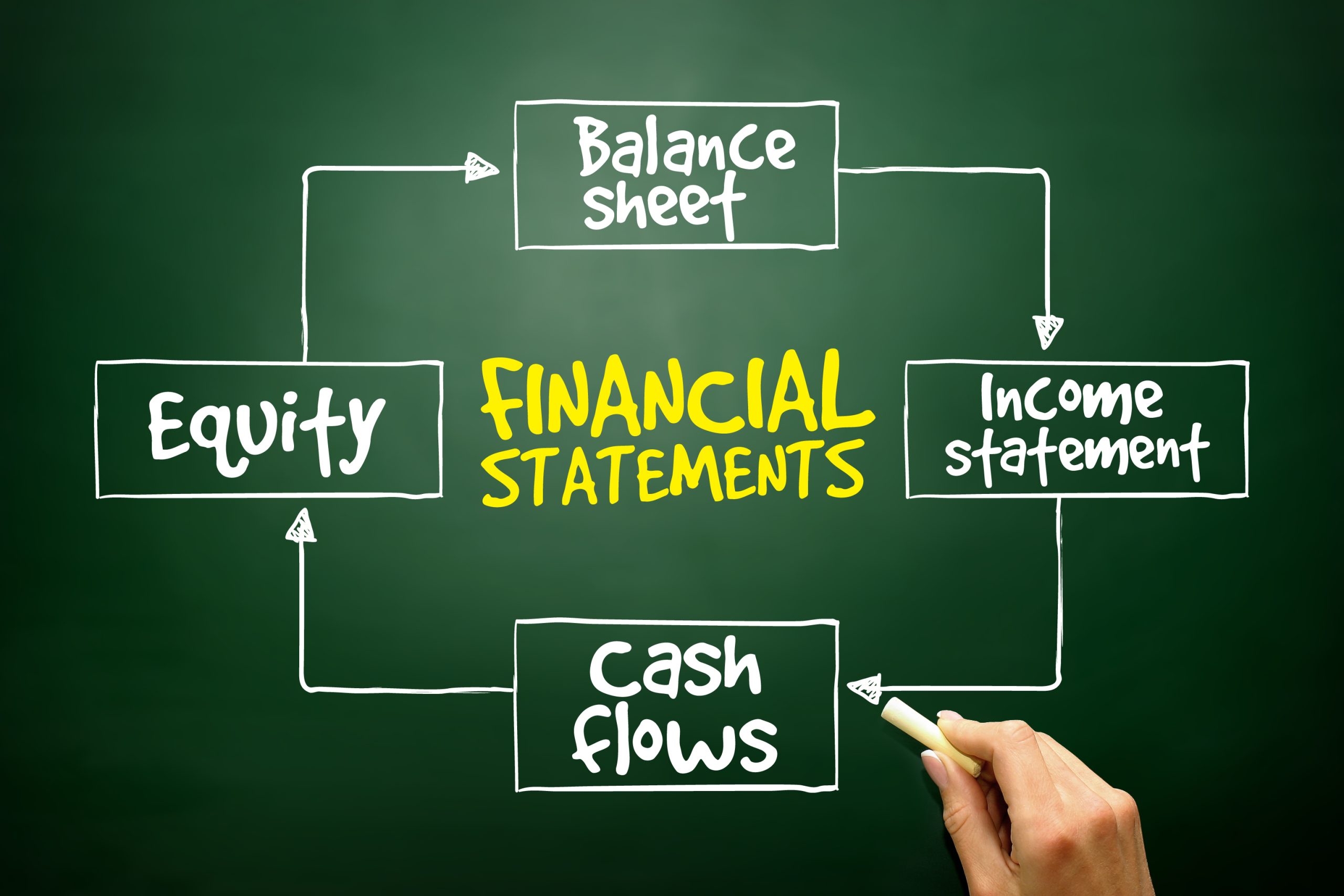How to Read Financial Statements:
THE BEGINNER’S GUIDE TO READING & UNDERSTANDING FINANCIAL STATEMENTS
How to Read Financial Statements:
THE BEGINNER’S GUIDE TO READING & UNDERSTANDING FINANCIAL STATEMENTS

When it comes to investing in stocks or evaluating a company’s financial health, reading financial statements is a fundamental skill that every investor must master. Financial statements like income statements, balance sheets, and cash flow statements provide a wealth of information about a company’s financial performance and position. As a business owner and entrepreneur, you don’t have to have an accounting degree to run your business and make business decisions. Financials help you keep a watchful eye on your organization’s financial strength and performance, and they help you spot potential problems early enough to adjust your purchasing and spending habits before they become detrimental to success. Financial statements also provide a snapshot of business activities to share with lenders, board members, and investors.
However, reading financial statements can be like deciphering a foreign language for the uninitiated. In this article, we will provide a step-by-step guide on how to read financial statements and what information to look out for.
Income Statement
The Income statement shows how much money a company has earned and how much it has spent over a specific period. It comprises three essential components: revenue, expenses, and net income. Revenue represents the total money a company has received from selling its products or services. Expenses are the costs incurred to generate revenue, such as salaries, rent, and marketing. Net income is the difference between revenue and expenses.
When analyzing the income statement, investors should look beyond just the bottom line net income figure. It is essential to understand how the company generates revenue and whether its revenue growth is sustainable. Investors should look out for trends in revenue growth, changes in gross margin, and operating expenses.
Cash Flow
The cash flow statement shows how much cash a company has generated and how it has been used over a specific period. It consists of three sections- cash flow from operating activities, cash flow from investing activities, and cash flow from financing activities. Investors should look beyond just the net cash flow figure when analyzing the cash flow statement. It is crucial to understand whether the company’s cash flow is sustainable and whether the company is using its cash flow efficiently. Investors should look for trends in cash flow from operating activities, capital expenditures, and dividends paid.
Understanding the Statement of Cash Flows, sometimes called cash flow statements, is essential for anyone who makes financial decisions for a company. The Statement of Cash Flows provides a single document of revenue (cash generated) and expenditures for a period. It covers various periods: a month, quarter, year, or other defined timeframe. Statement of Cash flows creates a bridge between the Balance Sheet and the Income Statement, showing exactly how cash moves in and out of business.
Three Key Transaction Categories:
Assets are Revenue-generating transactions, and Liabilities are expenditure transactions broken into three categories: operating, investment, and financing. Transactions represent incoming and outgoing business activities. The primary goal of creating a Statement of Cash Flows is to accurately determine the actual cash or cash equivalent on hand at a particular time.
Operating Activities
Operating activities refer to the company’s primary business activities, such as sales and purchasing goods and services. This category includes cash inflows and outflows related to revenue-generating activities, such as cash received from customers, payments to suppliers, employee salaries, and taxes paid. For example, when a company receives cash payments from customers, it increases its cash inflows from operating activities. Conversely, when a company pays cash to suppliers, it reduces cash outflows from operating activities. The net cash flow from operating activities provides insight into how much cash the company generates or consumes from its core business activities.
Investing Activities
Investing activities refer to cash inflows and outflows that are related to investments in long-term assets, such as property, plant, and equipment, and investment in securities. This category includes cash inflows from the sale of long-term assets, such as property or investments, and cash outflows for the purchase of long-term assets. For example, if a company sells an asset, it will increase cash inflows from investing activities. Conversely, when a company purchases new equipment or invests in securities, it reduces cash outflows from investing activities. The net cash flow from investing activities provides insight into how much cash the company is investing in its long-term growth.
Financing Activities
Investing activities refer to cash inflows and outflows related to the company’s financing activities, such as raising capital through debt or equity financing or paying dividends to shareholders. This category includes cash inflows from issuing new debt or equity and cash outflows for the repayment of debt or payment of dividends. For example, if a company issues new shares to raise funds, it will increase cash inflows from financing activities. Conversely, if a company pays shareholders dividends, it reduces cash outflows from financing activities. The net cash flow from financing activities provides insight into how much cash the company raises or returns to its investors.
Balance Sheet
The Balance Sheet provides a snapshot of a company’s financial position at a specific point in time. It consists of three sections: Assets, Liabilities, and Equity. Assets represent what the company owns, while liabilities are what it owes. Equity represents what is left over after liabilities are subtracted from assets. Investors should focus on the company’s liquidity and solvency when analyzing the balance sheet. Liquidity refers to a company’s ability to meet its short-term obligations, while solvency refers to its long-term ability to pay its debts. Investors should look out for the company’s current ratio ( current assets divided by current liabilities) as a measure of liquidity and the debt-to-equity ratio( total liabilities divided by equity) as a measure of solvency.
Financial Ratios:
Financial ratios are used to compare a company’s performance and financial health relative to industry peers or its historical performance. Some of the key financial ratios investors use include:
Price-to-Earnings (P/E) Ratio: A measure of how much investors are willing to pay for each dollar of earnings. A higher P/E ratio indicates higher growth expectations.
Price-to-Sales (P/S) Ratio: A measure of how much investors are willing to pay for each dollar of sales. A high P/S ratio may indicate investors are willing to pay more for the company’s growth prospects.
Price-to-Equity (ROE): A measure of how efficiently a company uses shareholder equity to generate profits. A higher ROE implies the company generates a higher shareholder equity return.
Debt-to-Equity Ratio: A measure of how much debt a company has relative to its equity. A high debt-to-equity ratio signals financial risk, while a low ratio indicates that a company uses less debt financing.

Conclusion
In conclusion, reading financial statements can be overwhelming for business owners and investors, but it does get more natural with practice. Understanding a company’s financial health and performance is critical in making informed investment decisions. Investors can comprehensively view a company’s financial position by analyzing income statements, balance sheets, cash flow statements, and financial ratios. It is advisable to seek professional advice if you still have questions or need clarification, especially if you are a beginner.







Stay In Touch